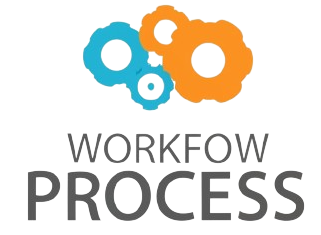Understanding tokens in AI is essential to grasp how modern language models and other artificial intelligence systems process information. Tokens are the fundamental building blocks used by AI to interpret, generate, and manipulate text data. Whether it’s a word, part of a word, or even a character, these units enable machines to make sense of human language and perform various language-related tasks. In this article, we will explore what tokens are, how they function within AI models, their significance in natural language processing (NLP), and the challenges associated with tokenization. Additionally, we’ll look at real-world examples that clarify the practical role tokens play in AI systems.
What is a token in artificial intelligence?
A token can be described as a piece of text that a language model treats as a single unit for processing. In natural language, a token might be a word such as “cat”, punctuation marks like “.” or “,”, or parts of compound words such as “un-“, “believ-”, or “-able”. Unlike human reading, where we naturally recognize words as whole units, AI algorithms often split sentences into tokens to systematically analyze the components.
For example, consider the sentence: The quick brown fox jumps over the lazy dog.
An AI model might divide this into tokens like [“The”, “quick”, “brown”, “fox”, “jumps”, “over”, “the”, “lazy”, “dog”, “.”]. Each of these tokens carries meaning individually, and their combination allows the AI to comprehend the context.
How tokens impact AI language models
Tokens are critical because AI models operate by predicting or evaluating sequences of these tokens rather than whole sentences or paragraphs directly. This token-based approach allows models like GPT to handle a vast vocabulary efficiently and generate coherent responses.
Tokenization strategies differ depending on the model. Some models tokenize at the word level, while others employ subword units, which break complex words into smaller parts allowing the model to understand rare or new words by combining familiar tokens.
Practical case study: In machine translation, tokenization ensures that phrases from one language are mapped correctly to tokens in another language. For instance, the word “unhappiness” may be tokenized into [“un-“, “happi”, “ness”], helping the model process the word by understanding its components: a prefix, root, and suffix.
The role of tokens in natural language understanding (NLU)
Beyond text generation, tokens are vital for understanding context and meaning in various AI-driven tasks such as sentiment analysis, named entity recognition, and question answering.
By dividing input text into tokens, AI can assign meaning and labels more precisely. For example, in sentiment analysis, words like “good” and “bad” may be tokens that signal positive or negative sentiment.
Real-world scenario: When a chatbot receives a customer query like “Can I return my purchase if I’m not satisfied?”
, it breaks this into tokens. This allows the model to identify key elements, such as the action “return,” the object “purchase,” and the conditional phrase. This fine-grained token approach helps the AI accurately interpret customer intent and provide relevant responses.
Challenges and limitations of tokens in AI
While tokens provide the foundation for AI language processing, they also present challenges. Tokenization can be tricky for languages with complex word structures, like Chinese or Arabic, where the concept of a “word” is less clear-cut than in English.
Moreover, handling ambiguous tokens, idioms, or slang can be difficult. Over-splitting words can dilute meaning, while under-tokenizing can lead to misunderstanding or incomplete processing.
Example: The phrase “kick the bucket”
tokenized just into words may lose its idiomatic meaning (which actually means “to die”), leading to literal and incorrect interpretations by the AI.
Additionally, the number of tokens allowed in a single input or output is often limited for efficiency reasons, which can constrain model performance on very long texts.
Summary and final thoughts
Tokens in AI act as the building blocks of language understanding, allowing models to analyze and generate text effectively. By converting sentences into manageable units, AI systems can handle vast vocabularies, understand context, and perform diverse tasks ranging from translation to chatbots.
However, tokenization requires careful design to accommodate different languages and linguistic nuances, and challenges such as idioms or ambiguous terms remain areas for improvement. Understanding tokens not only clarifies how language models function beneath the surface but also highlights the complexities involved in teaching a machine to truly “understand” human language.
Overall, tokens are fundamental to AI’s progress in natural language processing, and ongoing research continues to optimize how models tokenize and interpret textual data, enhancing the quality and versatility of AI-driven language tools in our everyday lives.
